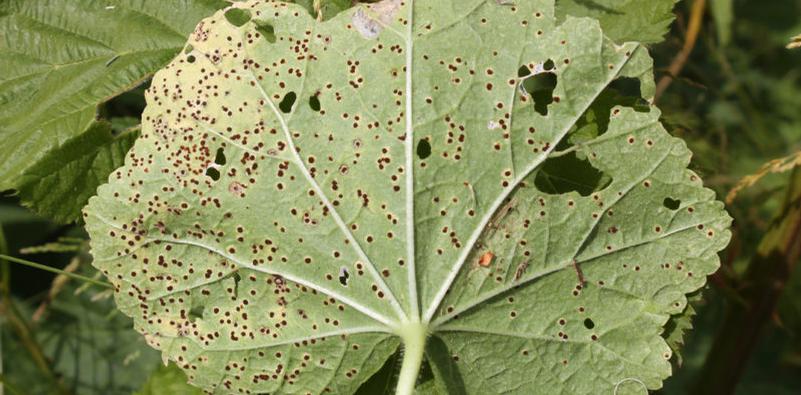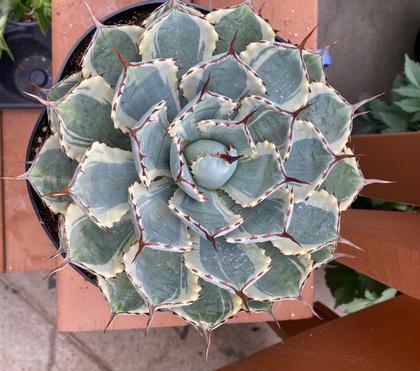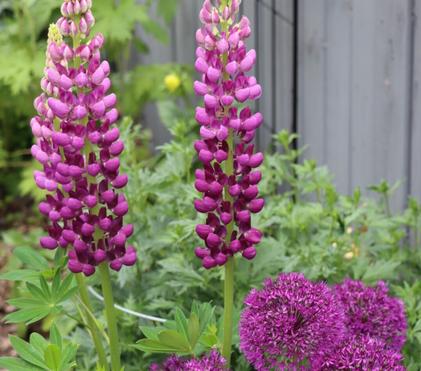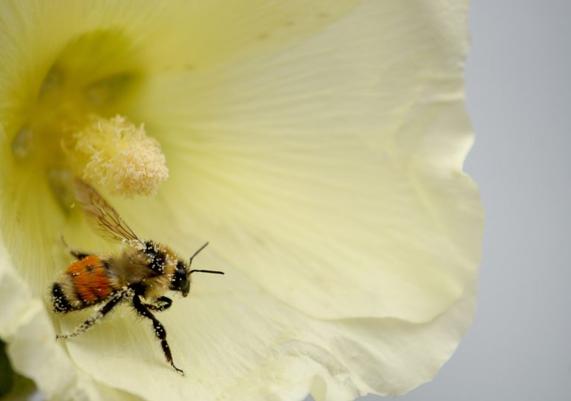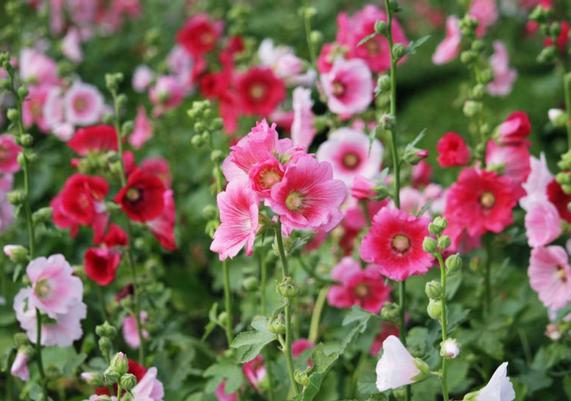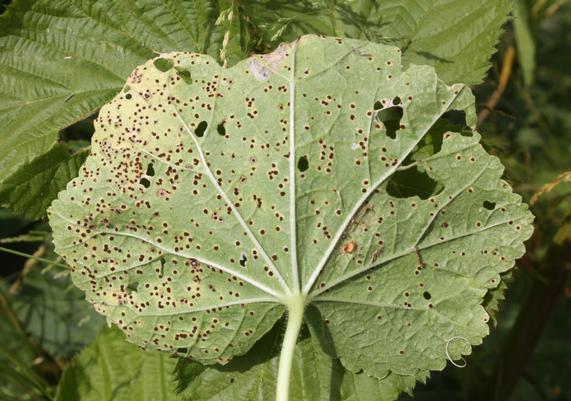How to Deal with a Hollyhock Rust Infection
Have you ever looked at your Hollyhocks only to find unsightly spots and lacey or dying leaves and asked yourself, “what is wrong with my Hollyhocks?” These different kinds of deterioration are likely the handiwork of Hollyhock Rust.
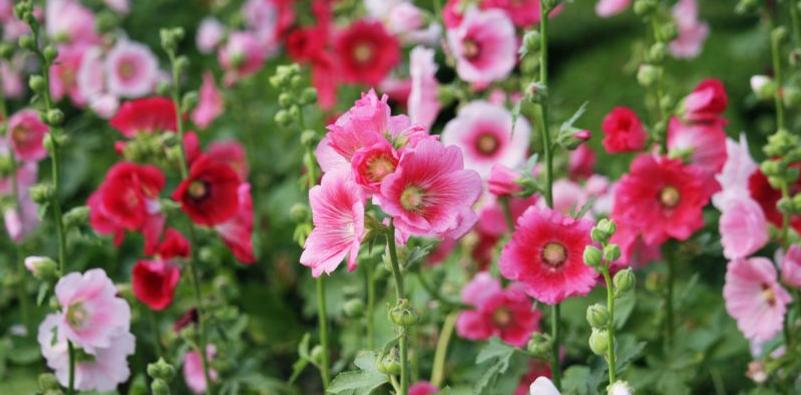
Let’s take some time to talk about what is Hollyhock rust disease, the signs & symptoms of a Hollyhock rust infection, and how to treat rust on Hollyhocks.
What is Hollyhock Rust Disease?
Hollyhocks (‘Alcea’ in Latin) are the quintessential cottage garden plant. Some types of Hollyhocks are biennials and others are short-lived perennials. They grow all over the world in horticultural zones 3-9, making them a part of the landscape on every continent except the Arctic and Antarctica.
‘Rust’ is a general term used to describe fungal plant infections. The word ‘rust’ has been used because the orange looking spots that appear on the plants look like rust on metal. Rust can affect annuals, perennials, roses, trees, and shrubs. The good news is that most kinds of plants, trees, shrubs and perennials are affected by their own specific kinds of fungus since most rusts are plant-specific, meaning you will likely know the exact kind of rust to combat.
Rust is the most common and widespread disease to affect Hollyhocks. As a matter of fact, it is an issue among Hollyhocks globally. The rust infection known to Hollyhocks is caused by a fungus called Puccinia malvacearum, and it also affects annual Malvas and Lavatera.
How Hollyhock Rust Disease Develops
Like most diseases, the symptoms start out small and innocuous, but, as the infection develops, the rust eventually travels rapidly throughout the plant and to neighbouring Hollyhock plants. Hollyhocks rarely die from this disease, though, so you there is some good news.
Hollyhock Rust Disease can cause plants to become stunted due to the damage to their leaves which reduces their ability to generate food for the plant. The Hollyhocks will look disheveled, unattractive, and unsightly with dried and yellowed leaves.
Fungus grows in response to warm, humid weather conditions. Over the last few years, the Edmonton area has experienced these exact circumstances. Fungus loves to grow at the height of a warm, rainy summer. Hollyhock rust progresses quickly. Once it gets started, the infection worsens as summer marches on.
Hollyhock rust spores overwinter in our climate on affected Hollyhock stem and leaf debris, meaning new plants are infected yearly. In the spring, the rust spores are caught up in wind currents or water droplets and hop on the nearest Hollyhock leaf.
The first sign of Hollyhock rust disease are little spots growing on the underside of the lower leaves. They are small at first, but they eventually grow to be the size of a small nail head. These spots are mostly brown or black but can also be yellowish. These are the first little pustules of the fungus infection.
The spots further develop into larger pustules that are lumpy and spore-producing. Sometimes they can be brown in colour, and other times they can look orange, which is the reason that this is called ‘Rust’. These spores swiftly work their way up the plant and onto neighbouring plants.
Sources are somewhat conflicted as to whether or not to allow infected Hollyhocks to seed. It is thought that the seeds themselves aren’t infected, but the calyces holding the seeds can be. So, it is recommended to get those infected plant parts out of the garden.
Signs & Symptoms of Rust in Hollyhocks
A Hollyhock rust infection affects all green parts of the plant. Let’s look at the plant parts individually:
Hollyhock Leaves with Rust Disease
- The first indicator of a rust infection are the little spots/pustules mentioned above on the underside of the lower leaves
- Yellowed leaves
- With progressed infections, you will see spots on the top sides of the leaves
- Lacey leaves, where cells have died from the infection
- Brown, dried, dead, crispy leaves
Hollyhock Stems with Rust Disease
- This is a later sign, but you will see brown, black, or orange spots on the stems.
Hollyhock Calyces with Rust Disease
- A calyx is located on the backside of a Hollyhock flower which eventually becomes the seed pod cover.
- The calyx will have spots as above and are sometimes covered with orange dust.
How To Treat Hollyhock Rust
Hollyhock fungal rust infections can be reduced but rarely are they cured. The goal in this is to break the disease cycle. Again, remember that it is rare for Hollyhock rust to kill a plant altogether.
The approach should be preventing the infection and reducing the infection
Grow Hollyhock (Alcea) Rust Resistant Varieties
- A good way to reduce the incidence of Hollyhock rust disease is to aim to grow cultivars that are resistant to rust (but not necessarily rust-proof).
- Look for these varieties when shopping for plants or seeds:
- Hollyhock (Alcea) Spotlight Series (Blacknight, Mars Magic, Polarstar, Radiant Rose, Sunshine)
- Alcea Ficifolia ‘Las Vegas’
- Alcea Happy Lights Mix
Purchase Disease Free Hollyhock Plants
- Be careful to check Hollyhock plants thoroughly before buying them.
- Inspect the undersides of the leaves and stems for any spots.
Keep the Hollyhock Patch Dry
- Water Hollyhocks in the morning so excess water will dry during the day. The drier the leaves stay, the better to discourage fungal growth.
- Water Hollyhocks at the base of the plant to keep the leaves from getting wet and avoid using a sprinkler. The rationale is two-fold: It keeps the leaves drier and prevents spores from being passed along to the leaves.
Encourage Air Movement in the Hollyhock Patch
- Good air movement keeps things drier, so it may be necessary to thin the Hollyhock patch out a bit to prevent air stagnation. Cut Hollyhock stems at the base when thinning them out.
- Keep Hollyhocks at least 60-90 cm apart to encourage air movement.
Monitor Hollyhocks Regularly
- Check your Hollyhocks on a regular basis for any signs of fungus pustules by inspecting the lower leaves weekly for any spotting on the undersides of the leaves.
Remove Affected Leaves Immediately
- Destroy any plant, leaf, or stem material that has any of the above signs or symptoms by either:
- Burning the leaves
- Bagging and sending them to the dump
Proper Hollyhock Care in the Fall
- If the Hollyhocks have any signs of rust, cut the plants down flush with the ground when they have completed blooming and thoroughly collect everything – every leaf, stem, dried flower, and seed pod – and remove them from the garden.
- How you get rid of the Hollyhock debris is up to you. You can burn it or bag it – just don’t let it decompose in the compost pile. Allowing infected Hollyhocks to compost will further encourage the fungus development and spread in the garden.
Avoid Using Rust Affected Hollyhock Seeds
- It is thought that Hollyhock seeds that have grown on rust infected plants themselves aren’t infected, but the calyces holding the seeds can be. It is recommended to get those infected plant parts out of the garden.
About Fungicides
- Some sources recommend using fungicides either in the fall or at first emergence in the spring. We strongly suggest you use fungicides as a last resort because most sources agree that the best approach to Hollyhock rust infections is to reduce it as they are very difficult to cure.
